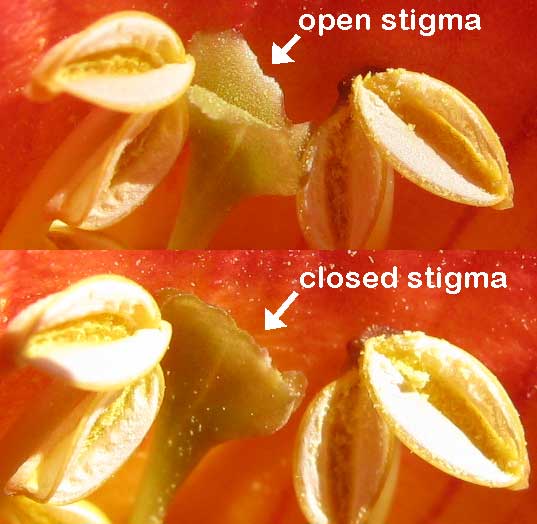Photo by Mike Bayly licensed by CC BY-NC-SA 2.0
The pimpernel sundew (Drosera glanduligera) is a very special sundew. It is native to parts of southern Australia as well as Tasmania. With a rosette diameter of only 2.5–6 cm (1–2 in), it is a tiny plant. It is also very short lived, living out its entire lifecycle within the span of winter. However, these facts are not what make this species so interesting. This little sundew grows its own catapults that help it capture prey.
Sundews are incredible carnivores. Each of their leaves are decked out in “tentacles” whose tips secrete sticky mucilage. Whether attracted to the leaves on purpose or simply brushing by them on accident, insects find themselves mired down by the mucilage. To make matters worse, the leaves of many sundew species are capable of movement. As the insects struggle, the tentacles bend inwards and the leaves begin to roll up, thus securing the fate of the hapless victim.
Photo by Peterbest1954 licensed by CC BY-SA 4.0
For small sundews, prey capture is a bit tricky. Whereas smaller arthropods like springtails and isopods are easily captured, larger arthropods are often able to wriggle their way free of the leaves of all but the largest species of sundew. Drosera glanduligera is by no means large and that may be why it utilizes a unique method of trapping larger prey.
Along the outside of each leaf are tentacles that are much longer than the rest. They also differ from the typical sundew tentacle in that they are not tipped with sticky mucilage. However, they are more deadly than they look. Each of these long tentacles is essentially a mini catapult lying in wait. Anything unfortunate enough to brush across one of those tentacles is in for a rude awakening.
(A) Each step between 1 and 10 depicts a 5 ms time interval. (B) Speed (blue) and acceleration (red) of the tentacle head during the bending motion.
Withing only a few miliseconds, the tentacle bends upward, catapulting the prey towards the center of the leaf. Each leaf on D. glanduligera is shaped like a spoon with the highest concentration of sticky hairs at the center. By catapulting arthropods into the center of the leaf, they are far less likely to escape. Once immobilized, the plant can go about the digestion process.
It is amazing just how fast these tentacles can move. To see this happen in any detail, one needs a high speed camera. The amazing thing is that experts still aren’t 100% certain how such rapid movement is possible. The leading hypothesis involves a change in water pressure within specific cells at the base of the tentacles. When triggered, water is rapidly transported out of the cells on the surface of the tentacle base. With stress coming from water-filled cells underneath, the base of the tentacle bends quickly.
Amazingly, the cells often rupture after the tentacle is triggered. What’s more, they do not reset. Each tentacle is only good for one catapult. This may seem wasteful for such a short-lived species but D. glanduligera produces leaves throughout the entirety of its short life. Therefore, there are always new traps waiting to be triggered. Also, provided arthropods are caught with enough frequency, the plant is sure to obtain enough nutrients from each meal to fuel flowering and seed set. Pretty remarkable for such a tiny carnivore!
Further Reading: [1]








